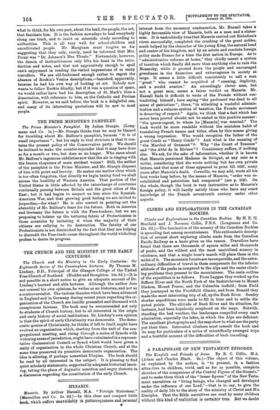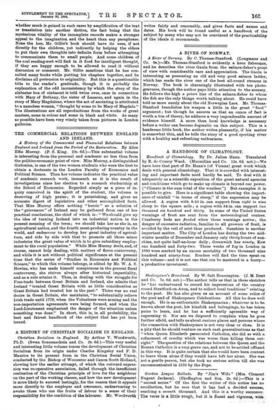A PARAPHRASE OF NEW TESTAMENT EPISODES.
The Kinsfolk and Friends of Jesus. By R. C. Gillie, M.A. (Adam and Charles Black. 6s.)—The object of this volume, as explained by the author, is "to present, in a fashion attraztive to children, vivid, and as far as possible, complete sketches of the companions of the Central Figure of the Gospels," and to make them think of the "lesser figures" of the New Testa- ment narratives as "living beings, who changed and developed under the influence of our Lord,"—that is to say, to give the reality of daily life to the story of the ministry of Christ and His Disciples. That the Bible narratives are read by many children without this kind of realisation is certainly true. But we doubt
whether much is gained in such cases by amplification of the text or translation into another diction, the fact being that the mysterious vitality of the incomplete records makes a stronger appeal to the imagination and the heart than any paraphrase. None the leas, Mr. Gillie's book should have its uses, if not directly for the children, yet indirectly by helping the elders to put their own thoughts into definite form before attempting to communicate them to small people. And some children of the real reading-sort will find in it food for intelligent thought, if they are happy enough to be allowed to read it without discussion or comment. Mr. Gillie mentions that he has con- sulted many books while putting his chapters together, and he disclaims all pretension to originality. But this is a questionable title to the reader's gratitude, though it is probably the explanation of the odd inconsistency by which the story of the alabaster box of ointment is told twice over, once in connection with Mary of Bethany, the sister of Lazarus, and again in the story of Mary Magdalene, where the act of anointing is attributed to a nameless woman, "thought by some to be Mary of Magdala." The illustrations are all reproductions from the works of great masters, some in colour and some in black and white. As many as possible have been very wisely taken from pictures in London galleries.























































 Previous page
Previous page